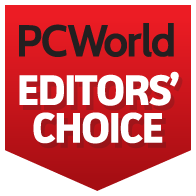Among display enthusiasts there’s a term that can cause any Twitter thread or Reddit post to go off the rails: PenTile. Accuse an OLED display of being PenTile, step back, and watch the world burn.
These conversations are rarely productive but underscore a nuance that’s easy to miss. Not all monitors of similar pixel density look equally sharp. Even the Alienware AW3423DW, the first world’s QD-OLED monitor and a fantastic gaming monitor, is not immune to this issue.
Here’s what you need to know about text clarity before you go OLED.
Zoom and enhance: The world of subpixels
Most people who aren’t obsessive monitor nerds believe a pixel is the smallest picture element on a display. This isn’t quite right. In fact, each pixel is made up of subpixels that work together to create a pixel’s light and color. Those subpixels may be further divided into additional subpixels of the same color.
A typical modern LCD displays has red, blue, and green subpixels arranged in a repeating pattern. This is an RGB pixel layout. Each red, blue, and green subpixel is rectangular in shape but together create a roughly square pixel. There are some exceptions, but RGB is most common.
LCD displays with an RGB subpixel layout technically arrange subpixels in a uniform, consistent pattern, which is good news for sharpness and consistency. Other display technologies, including OLED, have difficulty achieving this consistency. The exact reason for this differs between technologies but the result is the same. Subpixels are not placed in a consistent RGB pattern.
It’s worth noting that a uniform, consistent layout is possibly not necessary or even optimal, but I’ll leave that aside for display engineers to argue. Whatever the best subpixel layout might be, the reality is this: PC monitors that differ from the RGB subpixel layout can run into trouble.
OLED display technology: PenTile, WBGR, QD-OLED, and more
As often true in tech, the word PenTile is a specific term often used inaccurately to refer to any number of displays.
PenTile is a specific display technology manufactured by Samsung Display. Originally, it used a combination of subpixels of varying sizes. Each pixel was not made of red, blue, and green elements together. Instead, pixels share subpixels. This led to accusations Samsung was misrepresenting the true resolution of its PenTile OLED displays. Samsung has since moved on to a technology called Diamond Pixel.
PenTile shares subpixels across multiple pixels.
Other manufacturers, such as LG, use their own subpixel layouts. These can present similar problems, though not always for the same reasons. LG’s C1 OLED televisions, for example, use an WBGR layout. Windows is optimized for RGB, so this conflict can cause text clarity issues.
What about QD-OLED, the new hotness found in Alienware’s AW3423W? There’s good news and bad news.
QD-OLED does not share RGB subpixels between pixels, as did the infamous PenTile displays. However, the pixel arrangement is yet another deviation from traditional RGB. Instead, QD-OLED uses an unusual triangular subpixel layout that, once again, can cause problems when displaying text and other fine elements.
Why is OLED text clarity a problem for your PC setup?
OLED’s subpixel layout issues exist in many televisions just as on other displays, but they’re hard to notice when twice as far away from the display. A television is also less likely to show small, static text in the first place.
Text clarity on the Alienware AW3423DW suffers because of the unusual subpixel layout.
Matt Smith/IDG
Windows worsens the issue by focusing on displays with a standard RGB subpixel layout. Most Windows software also assumes the use of RGB subpixels. In theory, Windows might improve this with enhancements to ClearType, and a user-made tool called BetterClearType can help in some situations.
How can you buy the right OLED monitor for text clarity?
You’ll want to look for an OLED monitor with an RGB subpixel layout. The only OLED monitors that currently offer this are the LG UltraFine OLED Pro monitors, which are available in 27-inch and 32-inch flavors. They’re fantastically expensive, though, with the 27-inch model going for $2,999 and the 32-inch model costing a cool $3,999.
Does that mean you should avoid OLED monitors that lack an RGB subpixel layout? Absolutely not! Text clarity is one aspect of image quality. The Alienware AW3423DW’s text clarity is not amazing but it’s still a fantastic gaming monitor.
If you want to use the same monitor for gaming and editing PDF documents for work, however, you might be happier with an LCD display with an RGB subpixel layout – even if it won’t look as good in games.
I expect OLED monitors will eventually solve text clarity with a combination of higher pixel densities and improved software. This is what has occurred in smartphones. For now, however, reduced text clarity is a compromise PC enthusiasts shopping for OLED will need to tolerate.




